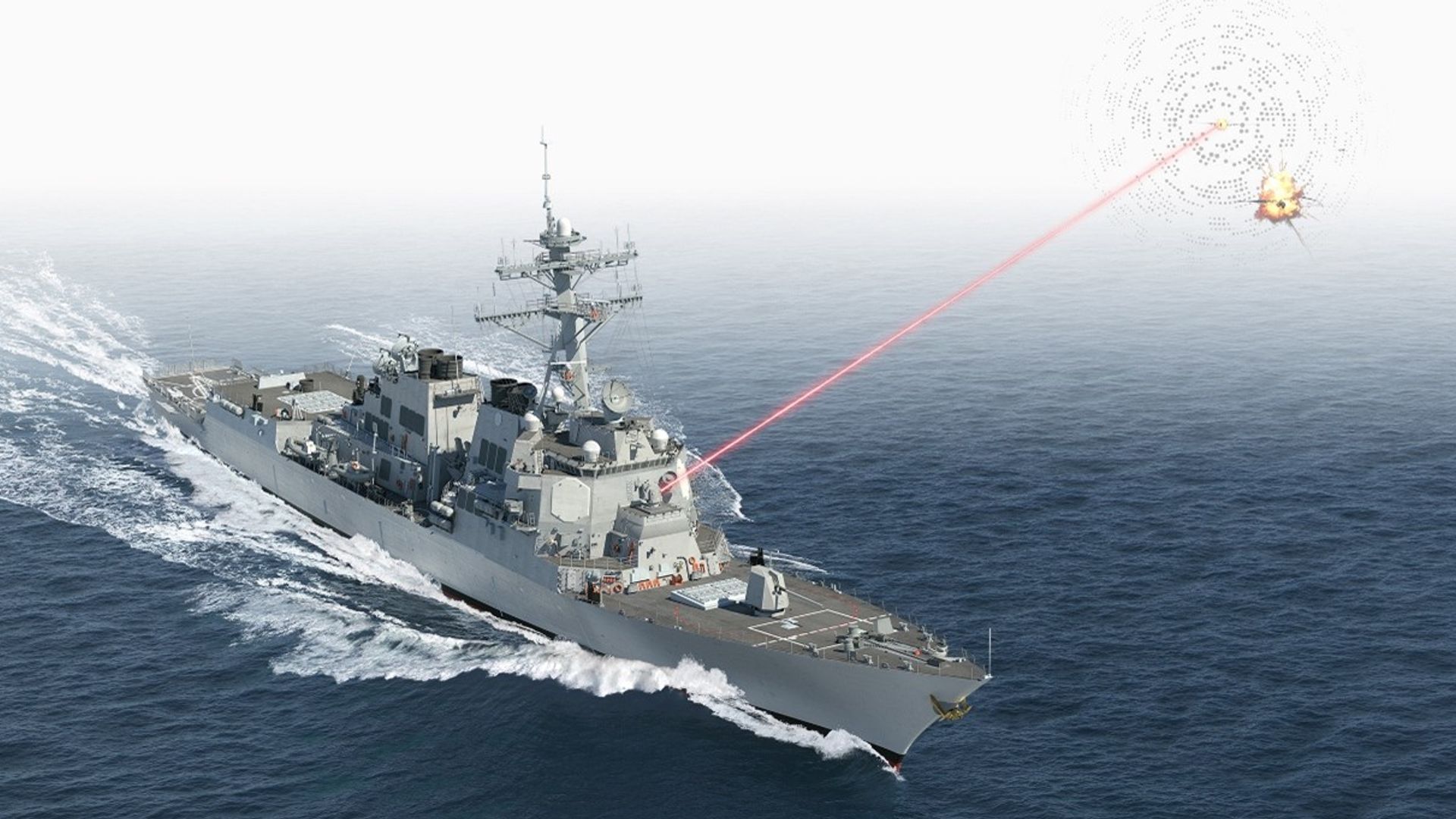
[RYAN ROBERTSON]
IRAN’S HISTORIC ATTACK ON ISRAEL DIDN’T DAMAGE MUCH OF ANYTHING ACTUALLY IN ISRAEL, BUT IT DID COST THE JEWISH STATE SOMEWHERE AROUND $1.3 BILLION. THAT’S ACCORDING TO THE LATEST EXPERT ANALYSIS OF THE ORDEAL.
THE ISRAEL DEFENSE FORCE SAYS 99% OF THE 300 OR SO THREATS FIRED FROM IRAN AT ISRAEL WERE INTERCEPTED. IRAN USED AN ASSORTMENT OF DRONES AND MISSILES IN ITS ATTACK, WHICH WAS SAID TO BE IN RETALIATION FOR AN ISRAELI STRIKE THAT KILLED TWO IRANIAN GENERALS.
THERE WAS SOME FOOTAGE FROM IRANIAN SOCIAL MEDIA WHICH SHOWED AT LEAST SOME OF THE DRONES AND MISSILES FIRED FROM IRAN FAILED TO LEAVE IRANIAN AIRSPACE, INSTEAD FALLING ON FIELDS AND HOMES BELOW.
ISRAEL EMPLOYS SOME OF THE WORLD’S FOREMOST AIR DEFENSE SYSTEMSL TAKING A LAYERED APPROACH TO ITS SUCCESS. THE IRON DOME PROTECTS AGAINST SHORT RANGE ROCKETS, ARTILLERY, AND SMALL DRONES. DAVID’S SLING IS USEFUL AGAINST PLANES, LARGER DRONES, TACTICAL MISSILES AND BALLISTIC MISSILES. AND THE ARROW MISSILE SYSTEM CAN TAKE OUT THREATS LIKE ICBMs WHILE STILL IN THE UPPER ATMOSPHERE.
BUT DEFENSE COSTS MORE THAN OFFENSE. A SINGLE INTERCEPTOR FROM AN IRON DOME COSTS $30,000. ONE LAUNCH FROM DAVID’S SLING IS ROUGHLY $700,000 AND AN ARROW 2 MISSILE IS $1.5 MILLION. THE UPGRADED ARROW THREE MISSILES ARE GOING FOR AROUND $2 MILLION A POP. THESE ARE ALL ORDERS OF MAGNITUDE MORE EXPENSIVE THAN THE WEAPONS THEY’RE DESIGNED TO INTERDICT.
SO LET’S GO AHEAD AND TAKE A LOOK AT THE “HISTORIC” ATTACK FROM IRAN AGAINST ISRAEL. IT’S BEING CALLED HISTORIC BECAUSE THIS IS THE FIRST TIME IRAN LAUNCHED ANYTHING FROM ITS OWN TERRITORY TO ATTACK ISRAEL, BUT IT’S HARDLY THE FIRST TIME IRAN HAS EVER TRIED TO ATTACK THE JEWISH STATE.
THERE IS AN ARGUMENT BEING MADE THAT IRAN SENT JUST ENOUGH MUNITIONS TO SAVE FACE AS A “RESPONSE” TO THE ATTACK AGAINST THE TWO GENERALS AT AN IRANIAN CONSULAR BUILDING.
THERE’S ANOTHER ARGUMENT THAT SAYS THIS ATTACK BY IRAN COULD BE PART OF A VERY DELIBERATE BATTLEFIELD STRATEGY. ONE THAT RUSSIA IS USING TO NEAR PERFECTION IN UKRAINE. THE TACTIC CALLS TO OVERWHELM AN ENEMY’S EXPENSIVE AIR DEFENSES WITH CHEAP MUNITIONS YOU’RE WILLING TO LOSE. SO, WHEN YOU BREAKOUT THE BIG GUNS, THEY’RE ABLE TO GET PAST THE AIR DEFENSES AND DO MORE DAMAGE.
WHEN IRAN LAUNCHED ITS STRIKE, IT’S NOT LIKE THE HOUTHIS IN YEMEN OR HEZBOLLAH IN LEBANON AND SYRIA STOPPED THEIR ASSAULTS. ISRAEL AND ITS ALLIES IN THE US, UK, FRANCE AND JORDAN STILL NEEDED TO DEFEND ATTACKS FROM MULTIPLE DIRECTIONS. IRAN IS SITTING ON A SEA OF OIL MONEY TOO, SO LAUNCHING MORE OF THESE RELATIVELY CHEAP ATTACKS COULD EVENTUALLY EXHAUST THE SUPPLY OF THOSE FANCY DEFENSIVE WEAPONS FASTER THAN THEY CAN BE BUILT. OR AT LEAST FASTER THAN THEY MIGHT BE RESUPPLIED.
THAT’S THE IDEA ANYWAY, AND IS WHY THERE IS SO MUCH FOCUS ON DIRECTED ENERGY WEAPONS, LIKE LASERS AND MICROWAVES.
I’VE REPORTED BEFORE ON A LOT OF THESE ENERGY WEAPONS CURRENTLY IN DEVELOPMENT, BUT HERE’S BASICALLY WHERE THAT TECHSTANDS: IT ISN’T PERFECT, BUT IT’S MATURING.
THE U.S. DEPARTMENT OF DEFENSE SPENDS AROUND A BILLION DOLLARS A YEAR DEVELOPING DIRECTED ENERGY WEAPONS. THERE ARE SEVERAL TYPES OF MICROWAVE SYSTEMS THAT ARE GOOD AGAINST SMALLER DRONES, EVEN WAVES OF THEM, BUT THEY HAVE A LIMITED DISTANCE.
LASERS GIVE COMMANDERS A LITTLE MORE OF THAT STAND-OFF ABILITY THEY CRAVE, AND FOR A FRACTION OF THE ENGAGEMENT COST OF MOST ANY KINETIC OPTION. ON AVERAGE, A SHOT FROM A HIGH ENERGY LASER IS IN THE NEIGHBORHOOD OF 11 TO 12 DOLLARS. BUT GETTING THE WEAPON OUT OF THE LAB AND INTO THE FIELD ON A LARGE SCALE IS PROVING TO BE QUITE COMPLICATED.
THE U.S. NAVY IS EXPERIMENTING WITH SOME HIGH ENERGY LASERS ABOARD SEVERAL VESSELS, BUT THERE’S NO FLEET-WIDE WEAPON YET. THE AIR FORCE JUST DITCHED ITS PLANS TO PUT A LASER ON A SPECIAL FORCES GUN SHIP.
ISRAELI-BASED RAFAEL IS WORKING WITH THE U.S. COMPANY LOCKHEED MARTIN TO FURTHER DEVELOP THE IRON BEAM INTO MORE OF AN OPERATIONAL WEAPON. THERE’S NO TIMELINE ON WHEN THAT PROJECT WILL REACH COMPLETION, THOUGH.
THE BRITISH MINISTRY OF DEFENCE HIT A MAJOR TESTING MILESTONE IN MARCH WITH ITS DIRECTED ENERGY WEAPON, SOMETHING THE UK CALLS DRAGONFIRE.
THE LASER TOOK DOWN AERIAL TARGETS FOR THE FIRST TIME IN THE TEST. DRAGONFIRE IS REPORTEDLY ACCURATE ENOUGH TO HIT A 1 POUND COIN A KILOMETER AWAY. FOR THOSE WHO DON’T DO METRIC, THAT MEANS IT CAN HIT A ONE INCH TARGET FROM A DISTANCE OF ABOUT TWO-THIRDS OF A MILE.
DRAGONFIRE’S PRODUCTION WAS ALREADY FAST TRACKED ONCE SO IT COULD BE FIELDED BY 2027. HOWEVER, THE UK IS NOW THINKING ABOUT SENDING THE SYSTEM TO UKRAINE EVEN SOONER BECAUSE AN IMPERFECT SYSTEM IS BETTER THAN NO SYSTEM.
SO, WHILE DIRECTED ENERGY WEAPONS CERTAINLY SEEM LIKE THE PERFECT TECH TO COUNTER THE CURRENT THREAT, DEVELOPING THOSE WEAPONS INTO FIELDABLE UNITS IS GOING TO TAKE MORE TIME AND (PROBABLY A LOT) MORE MONEY.







